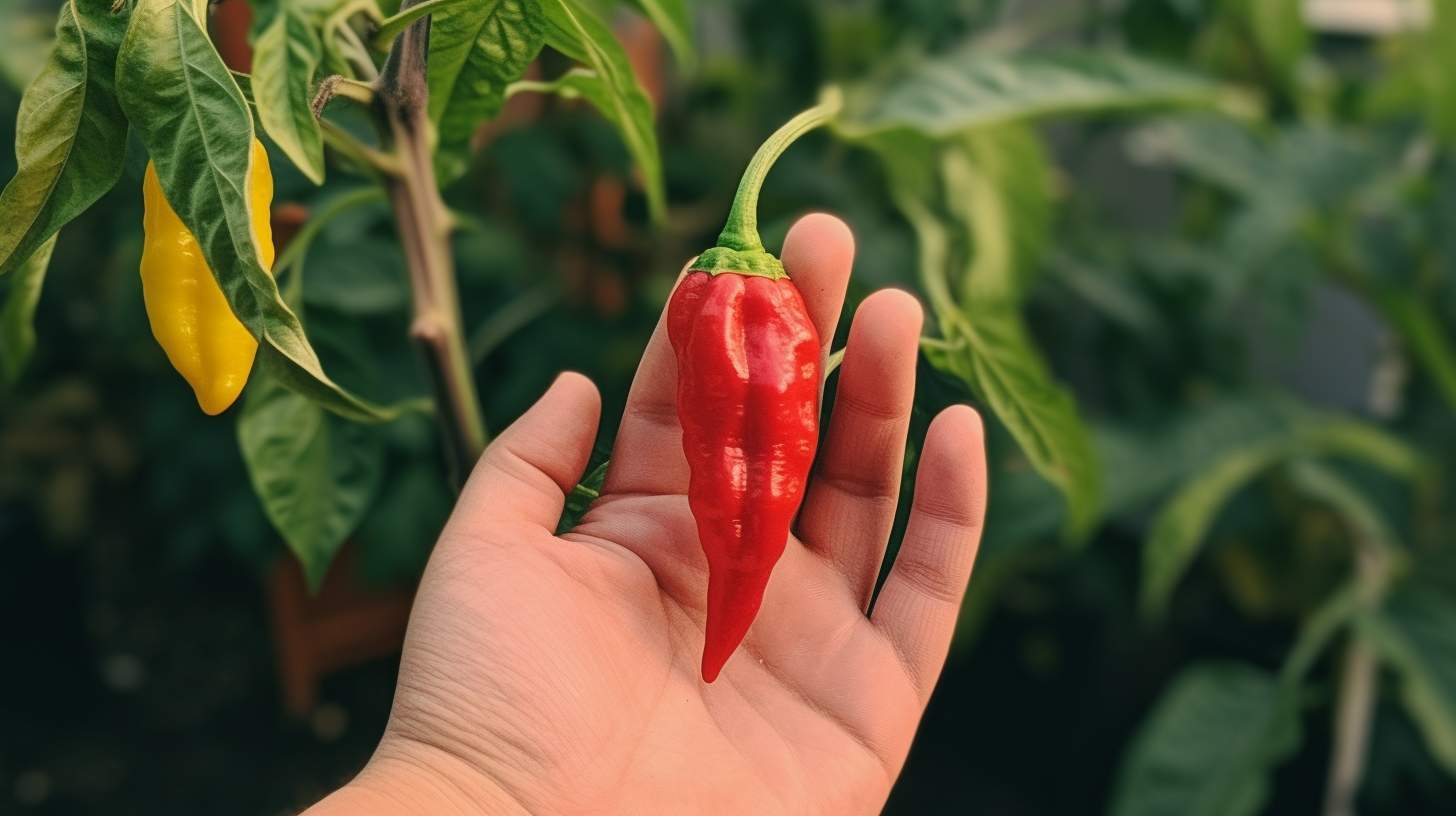
Dorset Naga Pepper is one of the hottest chili peppers in the world. Originating from Bangladesh and cultivated in Dorset, England, this fiery pepper packs a punch that can leave even the bravest spice lovers reaching for a glass of milk. But what makes this pepper so special? Its Scoville rating can reach over 1 million units, making it a true heavyweight in the chili world. Not just about heat, it also boasts a unique fruity flavor that adds depth to dishes. Whether you're a spice enthusiast or just curious, these 20 facts will give you a deeper appreciation for this blazing pepper.
Key Takeaways:
- Dorset Naga Pepper is one of the hottest chili peppers globally, with a fruity flavor and intense heat. It's used in spicy dishes, hot sauces, and has health benefits like boosting metabolism and reducing inflammation.
- Growing Dorset Naga Pepper requires warm, sunny conditions, and it takes about 120 days to harvest. It's a staple in Bangladeshi cuisine and holds cultural significance as a symbol of hospitality and warmth.
What is Dorset Naga Pepper?
Dorset Naga Pepper is one of the hottest chili peppers in the world. Originating from Bangladesh, it has gained popularity for its intense heat and unique flavor. Here are some fascinating facts about this fiery pepper.
-
Dorset Naga Pepper is a variety of the Naga Morich chili, which is native to Bangladesh and northeastern India.
-
It was developed in Dorset, England, by Joy and Michael Michaud, who cultivated it from Bangladeshi seeds.
How Hot is Dorset Naga Pepper?
The heat level of Dorset Naga Pepper is not for the faint-hearted. It ranks among the hottest peppers globally, making it a favorite for those who love extreme spiciness.
-
Dorset Naga Pepper can reach up to 1.5 million Scoville Heat Units (SHU), which measures the spiciness of chili peppers.
-
For comparison, a jalapeño pepper typically ranges between 2,500 to 8,000 SHU, making Dorset Naga significantly hotter.
Unique Characteristics of Dorset Naga Pepper
Beyond its heat, Dorset Naga Pepper has several unique features that set it apart from other chili peppers.
-
The pepper has a distinctive wrinkled appearance, often with a bright red or orange color when fully ripe.
-
It has a fruity, slightly citrusy flavor that adds complexity to its intense heat.
Uses of Dorset Naga Pepper
Dorset Naga Pepper is used in various culinary applications, especially in dishes that require a significant heat kick.
-
It is commonly used in Bangladeshi cuisine, particularly in curries and pickles.
-
The pepper is also used to make hot sauces, providing a fiery kick to any dish.
Health Benefits of Dorset Naga Pepper
Like many chili peppers, Dorset Naga offers several health benefits due to its high capsaicin content.
-
Capsaicin, the compound responsible for the pepper's heat, has been shown to boost metabolism and aid in weight loss.
-
It also has anti-inflammatory properties, which can help reduce pain and swelling.
Growing Dorset Naga Pepper
Growing Dorset Naga Pepper requires specific conditions to thrive, but it can be a rewarding experience for chili enthusiasts.
-
The pepper plant needs a warm climate with plenty of sunlight, ideally between 70-85°F.
-
It takes about 120 days from planting to harvest, making it a relatively long-growing pepper.
Interesting Facts About Dorset Naga Pepper
There are several intriguing tidbits about Dorset Naga Pepper that highlight its unique place in the world of chili peppers.
-
Dorset Naga Pepper has been featured in the Guinness World Records for its extreme heat.
-
It is often used in chili-eating contests due to its intense spiciness.
-
The pepper's heat can cause a burning sensation on the skin, so it's advisable to wear gloves when handling it.
Cultural Significance of Dorset Naga Pepper
Dorset Naga Pepper holds cultural importance in the regions where it is grown and consumed.
-
In Bangladesh, it is a staple in many traditional dishes and is highly valued for its heat and flavor.
-
The pepper is often given as a gift in Bangladeshi communities, symbolizing hospitality and warmth.
Challenges of Handling Dorset Naga Pepper
Due to its extreme heat, handling Dorset Naga Pepper requires caution and care.
-
When cutting or cooking with the pepper, it's essential to avoid touching your face or eyes, as it can cause severe irritation.
-
It's recommended to use a well-ventilated area when cooking with Dorset Naga to avoid inhaling the potent fumes.
-
If the pepper comes into contact with your skin, washing with soap and cold water can help alleviate the burning sensation.
The Fiery Finale
Dorset Naga Pepper isn't just another hot pepper. Its intense heat and unique flavor make it a standout in the world of spicy foods. Originating from Bangladesh and perfected in Dorset, England, this pepper has gained a reputation for being one of the hottest in the world. Its Scoville rating can reach up to 1.5 million units, making it a favorite among heat seekers. But it's not just about the burn; the Dorset Naga also offers a fruity undertone that enhances dishes. Whether you're a chili enthusiast or just curious, trying this pepper can be an unforgettable experience. Handle with care, though—its heat is not for the faint-hearted. So, next time you're looking to spice things up, remember the Dorset Naga Pepper. It’s a small fruit with a big punch!
Frequently Asked Questions
Was this page helpful?
Our commitment to delivering trustworthy and engaging content is at the heart of what we do. Each fact on our site is contributed by real users like you, bringing a wealth of diverse insights and information. To ensure the highest standards of accuracy and reliability, our dedicated editors meticulously review each submission. This process guarantees that the facts we share are not only fascinating but also credible. Trust in our commitment to quality and authenticity as you explore and learn with us.


